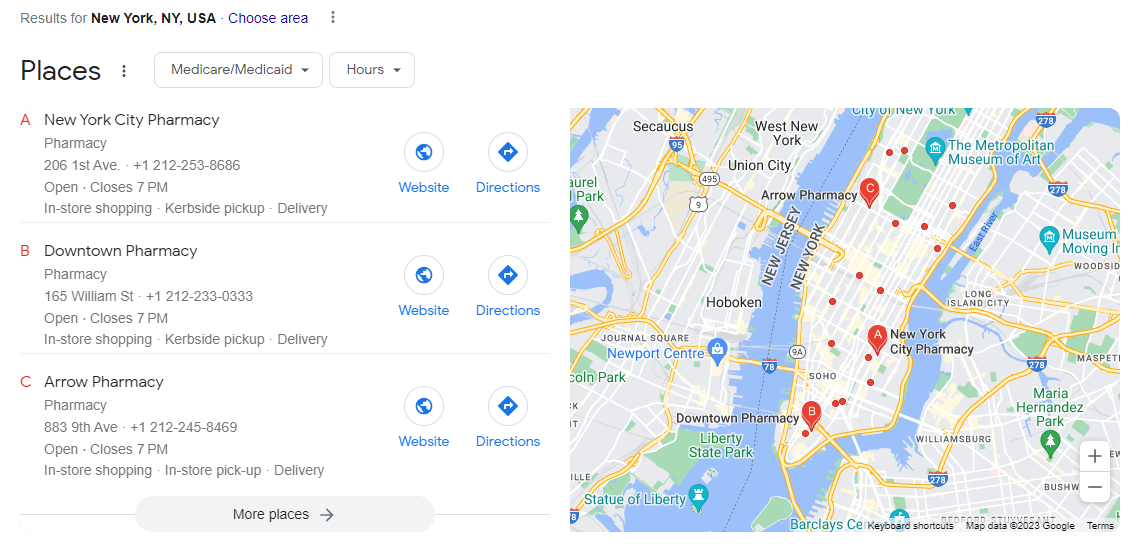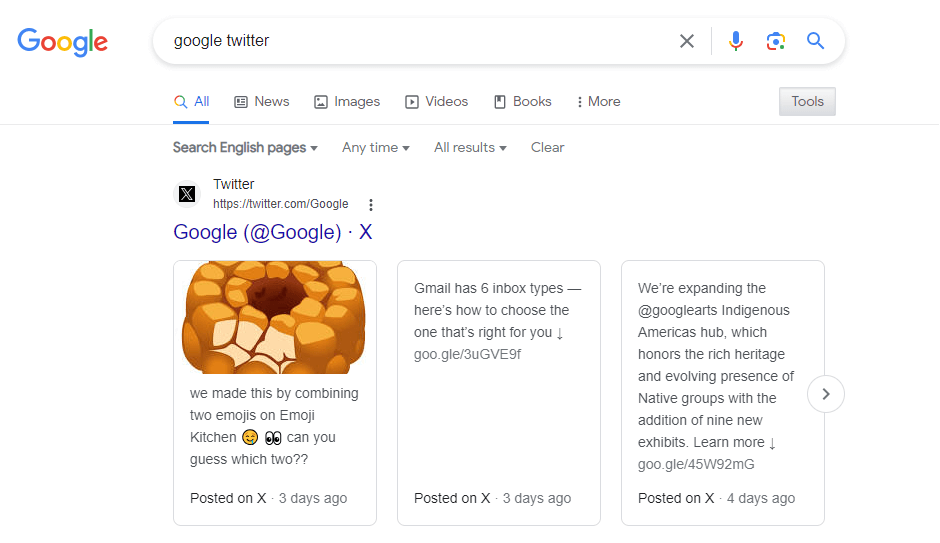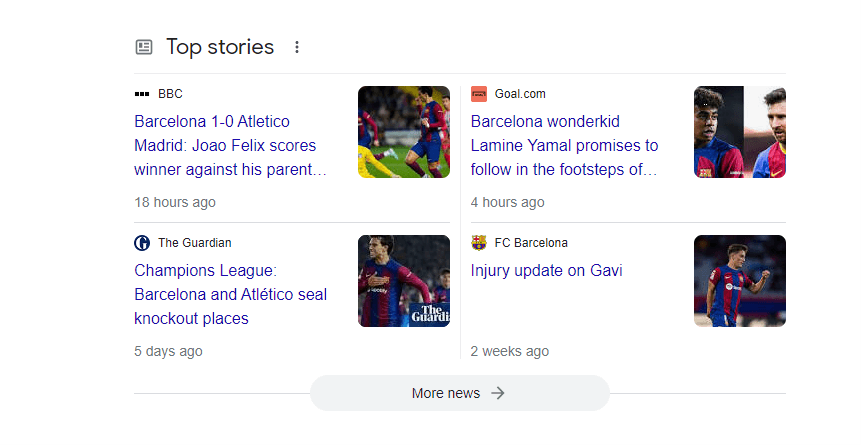What are SERPs?
Search Engine Results Pages (SERPs) are the pages displayed by search engines in response to a user’s query. When you type a query into a search engine like Google, Bing, or Yahoo, the results you see are collectively called the SERP. Each SERP is unique, even for the same keywords, as search engines customize the experience based on factors like the user’s location, browsing history, and device type.
Why are SERPs Important for Search Engine Optimization (SEO)?
SERPs play a pivotal role in Search Engine Optimization. Understanding how search engines present information to users can help businesses and website owners optimize their online content for better visibility and ranking. Here’s why SERPs are crucial for SEO:
| Visibility | Top-ranking pages on SERPs receive a significant share of clicks. Optimizing your content to rank higher increases your website’s visibility and potential traffic. |
| User Intent | By analyzing the types of results and features displayed on a SERP for specific queries, businesses can gain insights into user intent and tailor their content to match. |
| Brand Credibility | Websites that consistently appear on the first page of SERPs are often perceived as more credible and authoritative in their field. |
| Competitive Edge | By understanding SERPs, businesses can identify gaps in competitors’ strategies and find opportunities to outperform them. |
| Ad Opportunities | For businesses running paid campaigns, understanding how ads are displayed on SERPs can help optimize ad placements and budgets. |
Foundations of SERPs
The foundation of SERPs lies in the algorithms search engines use to rank and display content. These algorithms consider hundreds of factors to determine the relevance and authority of a webpage. The primary goal is to provide users with the most accurate and relevant results for their queries. Over the years, SERPs have evolved from displaying simple lists of blue links to incorporating rich features like images, videos, and interactive elements to enhance the user experience.
What’s on a Google SERP? And How Do SERP Rankings Work?
A typical Google SERP consists of various elements:
- Organic Results: These are listings of web pages that match the user’s query and are ranked based on Google’s algorithm without any payment involved.
- Paid Results: These are advertisements that appear at the top or bottom of SERPs. Advertisers bid on keywords to have their ads displayed for specific queries.
- Featured Snippets: These are selected search results displayed in a box at the top of the SERP. They provide users with quick answers to their questions.
- Knowledge Panels: Displayed on the right side of the SERP, these panels provide a snapshot of information about entities like businesses, people, or events.
- Local Packs: For location-based queries, Google displays a map along with a list of local businesses.
- Image and Video Results: Depending on the query, Google may display relevant images or videos.
- People Also Ask: A section that lists related questions users might be interested in.
How SERP Rankings Work: Google uses a complex algorithm to rank web pages on its SERP. Some of the primary factors include:
- Relevance: How well a page matches the user’s query.
- Authority: The credibility and trustworthiness of a website.
- User Experience: Factors like page speed, mobile-friendliness, and secure browsing play a role.
- Content Quality: Original, well-researched content is favored.
- Backlinks: The number and quality of other sites linking to a webpage.
Google continuously updates its algorithm to provide better results and combat manipulative SEO practices. Understanding and adapting to these updates is crucial for maintaining or improving rankings.
Distinguishing Between Organic and Paid Results
In the digital landscape of search engines, the results displayed on SERPs can broadly be categorized into two main types: Organic Search Results and Paid Search Results. While both aim to provide users with relevant information, their origins, purposes, and appearances can be quite distinct. Understanding the difference between these two is crucial for businesses, marketers, and regular users alike.
Organic Search Results

Organic Search Results, often simply referred to as “organic results”, are listings that appear on search engine results pages due to their relevance to the search terms, as opposed to their being advertisements. Here’s what characterizes them:
- Algorithm-Driven: Organic results are determined by search engine algorithms that evaluate numerous factors to rank pages. These factors can include site relevance, content quality, user engagement, backlinks, and more.
- No Direct Cost: Unlike paid results, there’s no fee associated with appearing in organic search results. Costs might be indirect, such as investing in good content creation, SEO strategies, and website optimization.
- Trust and Credibility: Many users trust organic results more than paid ones because they believe these results are more genuine and unbiased. Websites that rank high organically are often seen as authoritative in their field.
- Long-Term Strategy: Achieving a high rank in organic results doesn’t happen overnight. It requires a consistent and long-term SEO strategy, including optimizing website structure, creating high-quality content, and building backlinks.
- Appearance: Organic results typically consist of a title, URL, and a brief description or snippet from the page. They don’t have any ad labels or indicators.
Paid Search Results

Paid Search Results, commonly known as Pay-Per-Click (PPC) ads, are advertisements for which advertisers pay a fee each time their ad is clicked by a user. Here’s what characterizes them:
- Ad Auctions: Placement of paid results is determined by ad auctions. Advertisers bid on keywords, and when users search for those keywords, the winning ads get displayed.
- Immediate Visibility: Unlike organic results, paid ads offer immediate visibility. As soon as the campaign is live and the bid is competitive, ads can appear on the top or bottom of the SERP.
- Cost Involved: Advertisers pay each time someone clicks on their ad. The cost-per-click (CPC) can vary based on the keyword’s competition and the quality of the ad.
- Targeting Options: Paid ads allow for precise targeting. Advertisers can choose to display their ads based on demographics, location, device, time of day, and even user behavior.
- Appearance: Paid results typically appear at the top or bottom of the SERP, standing out from organic listings. They are usually labeled with an “Ad” indicator or similar to differentiate them from organic results.
- Short-Term Strategy: While PPC can provide immediate results, it’s often seen as a short-term strategy. The moment you stop funding your ads, they cease to appear, whereas organic results remain as long as they’re deemed relevant by the search engine.
Google About SERP
John Mueller, a Google Search Advocate, has tweeted about SERPs (search engine results pages) on a number of occasions. Here are a few of his recent tweets on the topic:
- October 23, 2023: “SERPs are constantly changing, and it’s important to keep up with the latest trends and developments so that your content is always visible to the people who are searching for it.”
- October 17, 2023: “One of the best ways to improve your SERP performance is to focus on creating high-quality, informative content that is relevant to your target audience.”
- October 10, 2023: “Don’t be afraid to experiment with different SERP features, such as rich snippets and featured snippets. These features can help your content stand out from the competition and attract more clicks.”
Mueller also regularly answers questions about SERPs on his weekly YouTube office hours. In a recent episode, he discussed the importance of creating content that is optimized for both search engines and users. He also emphasized the need to be patient with SERP performance, as it can take time for new content to rank well.
Overall, Mueller’s tweets and other public statements suggest that he views SERPs as an important tool for connecting users with the information they need. He also believes that SEO professionals should focus on creating high-quality content that is relevant to their target audience.
Key Features of SERPs
Modern Search Engine Results Pages (SERPs) have evolved beyond the simple list of blue links from the early days of the internet. Today, SERPs come with a variety of features designed to provide users with the most relevant information as quickly and efficiently as possible. These features enhance user experience by offering direct answers, visual content, or more in-depth information without requiring a click-through. Here’s a breakdown of some of the key features you’ll find on today’s SERPs:
Featured Snippets

Featured Snippets are concise answers to user queries that appear at the top of Google’s SERP, often referred to as “position zero.” They aim to provide users with direct answers without needing to click on a specific result.
– Appearance: They typically consist of a block of text, a URL, and a page title. Depending on the query, they can also include images, bulleted lists, or tables.
– Benefits: For website owners, appearing as a featured snippet can significantly increase visibility and click-through rates.
People Also Ask

The “People Also Ask” (PAA) box is a dynamic feature that provides a list of related questions to the original user query.
– Expansion: Clicking on a question in the PAA box will expand it to show a brief answer, often sourced from various websites. As users click on questions, more related questions may appear.
– Purpose: This feature aims to address a user’s broader informational needs by presenting related queries.
Related Searches

At the bottom of the SERP, users often find the “Related Searches” section. These are terms and queries that are related to the original search.
– Enhanced Exploration: This feature encourages users to explore topics further and can guide them to refine their search based on what others have looked for.
– Tailored Recommendations: The suggestions are algorithmically generated based on search patterns and behaviors.
Direct Answer Box

Direct Answer Boxes provide immediate answers to straightforward queries, such as factual information, calculations, or definitions.
– Efficiency: They reduce the need for users to click on a link, offering instant answers directly on the SERP.
– Sources: While the answer is provided on the SERP, the source website is always credited, usually with a link.
Knowledge Panel

Knowledge Panels offer a comprehensive overview of specific entities, such as businesses, celebrities, landmarks, or movies. They appear on the right side of the SERP.
– Rich Information: These panels aggregate information from various sources and can include facts, images, social media links, and more.
– Trustworthiness: Information in the Knowledge Panel often comes from credible sources, ensuring users receive accurate and reliable data.
Local Packs

For location-based queries, such as “restaurants near me” or “pharmacies in New York,” Local Packs display a map along with a list of local businesses relevant to the query.
– Detailed Listings: Each listing in the Local Pack can include the business’s name, address, phone number, reviews, and sometimes photos or hours of operation.
– Interactive Map: The accompanying map allows users to get a visual sense of each business’s location and proximity to them.
Google Flights

Google Flights is a search tool by Google that allows users to find, compare, and book flights. When users search for flight-related queries, Google may display a specialized module on the SERP with flight options.
– User-Friendly Interface: Google Flights provides filters like price, airline, duration, and stops to help users find the best flight for their needs.
– Price Tracking: Users can set up alerts to monitor fare changes for specific routes or dates.
– Direct Integration: While Google Flights aggregates information, bookings are often completed through airline websites or third-party travel agencies.
Google Image Results (or Image Pack)

The Image Pack is a block of image results displayed on the main Google SERP, typically in response to queries that have a visual aspect.
– Visual Queries: Image Packs often appear for searches related to topics like fashion, art, travel destinations, or specific objects.
– Interactive Experience: Hovering over an image provides a larger preview, and clicking leads to the source website.
– Optimization: For websites, ensuring images are optimized with relevant alt text, descriptive filenames, and high-quality resolution can improve chances of appearing in Image Packs.
Video Results

Video Results are a feature on SERPs that display relevant video content in response to user queries.
– Rich Content: Video results can be especially useful for tutorials, reviews, or any topic where a visual demonstration is beneficial.
– Sources: These results can come from various platforms, though YouTube, being a Google property, is prominently featured.
– Video Snippets: In some cases, Google might highlight specific sections of a video that directly address the user’s query.
Recipes

For food-related searches, Google may display a specialized section on the SERP dedicated to recipes. This feature is particularly useful for users looking for cooking inspiration or specific instructions.
– Rich Cards: Recipe results are often displayed in “rich cards” format, which can include images, ratings, cooking time, and more.
– Structured Data: Websites that structure their recipe content appropriately (using schema markup) have a better chance of appearing in this section.
– Filter Options: Users can filter recipe results based on criteria like ingredients, cooking time, or dietary preferences.
Google Shopping Results (or Organic Google Shopping Results)

Google Shopping Results are a specialized section of the SERP that showcases products relevant to a user’s search query. This feature is essential for e-commerce businesses and online shoppers.
– Product Listings: Each listing typically includes an image of the product, its price, the retailer’s name, and sometimes ratings or special offers.
– Direct Comparison: Users can easily compare products and prices from different retailers without visiting individual websites.
– Organic vs. Paid: While many listings in Google Shopping are paid advertisements, there are also organic results. Ensuring accurate product data, competitive pricing, and positive reviews can increase the chances of appearing organically.
– Merchant Center: Retailers utilize the Google Merchant Center to upload and manage their product listings, ensuring they are displayed accurately on the SERP.
Twitter Results

Google sometimes integrates real-time Twitter results into its SERPs, especially for trending topics or breaking news.
– Live Updates: This feature provides users with up-to-the-minute tweets directly related to their search query.
– Relevance: Google’s algorithm determines which tweets to display based on relevance, recency, and engagement.
– Visibility: For brands and individuals, this integration offers an opportunity for increased visibility, emphasizing the importance of timely and relevant tweeting.
Top Stories

Top Stories is a SERP feature that highlights recent news articles relevant to a user’s search query, ensuring users stay informed about current events.
– News Carousel: Articles are usually displayed in a carousel format, allowing users to scroll through multiple sources.
– Diverse Sources: Google aims to provide a mix of perspectives by pulling stories from various news outlets.
– Accelerated Mobile Pages (AMP): Many articles in Top Stories use Google’s AMP format, ensuring faster load times on mobile devices. Websites utilizing AMP often have a competitive edge in appearing in this section.
– Trustworthiness: Google prioritizes reputable news sources for this feature, emphasizing the importance of credibility and accurate reporting for news outlets.
Google SERP Checker to Monitor Your Website’s Ranking on Google SERP
The Google SERP Checker by Sitechecker is vital for SEO professionals and digital marketers, allowing them to monitor their website’s Google rankings for specific keywords. It offers a quick and accurate assessment of a website’s visibility on Google, aiding in evaluating SEO strategies. This tool is particularly useful for tracking ranking changes over time, helping users to spot trends and refine their SEO tactics.

Besides basic ranking checks, the tool provides deeper insights, allowing users to explore rankings across various Google domains and languages for a global perspective. It also analyzes competitors’ rankings, offering a better understanding of the competitive landscape. These features make it invaluable for crafting informed, targeted SEO strategies, enhancing a website’s overall search engine performance.
Track Your Google Position!
Maximize your SEO results with our comprehensive Google SERP Checker.
With SERP Alerts, users can receive notifications about significant ranking changes, allowing them to react promptly and adjust their strategies accordingly. These alerts ensure you’re always up to date with your website’s performance, making the Google SERP Checker an invaluable tool for crafting informed, targeted SEO strategies that enhance your site’s overall search engine performance.
Conclusion
As the digital landscape continues to evolve, so do the features and intricacies of Search Engine Results Pages (SERPs). These enhancements, ranging from shopping results to real-time tweets, highlight search engines’ commitment to delivering the most relevant and timely information to users. For businesses and content creators, understanding and adapting to these dynamic features is paramount. Not only do they offer avenues for increased visibility, but they also underscore the importance of quality content, user experience, and trustworthiness in the modern digital age. As users increasingly rely on search engines to navigate the vast expanse of the internet, the sophistication and diversity of SERPs will undoubtedly continue to grow, shaping the future of online search and discovery.









